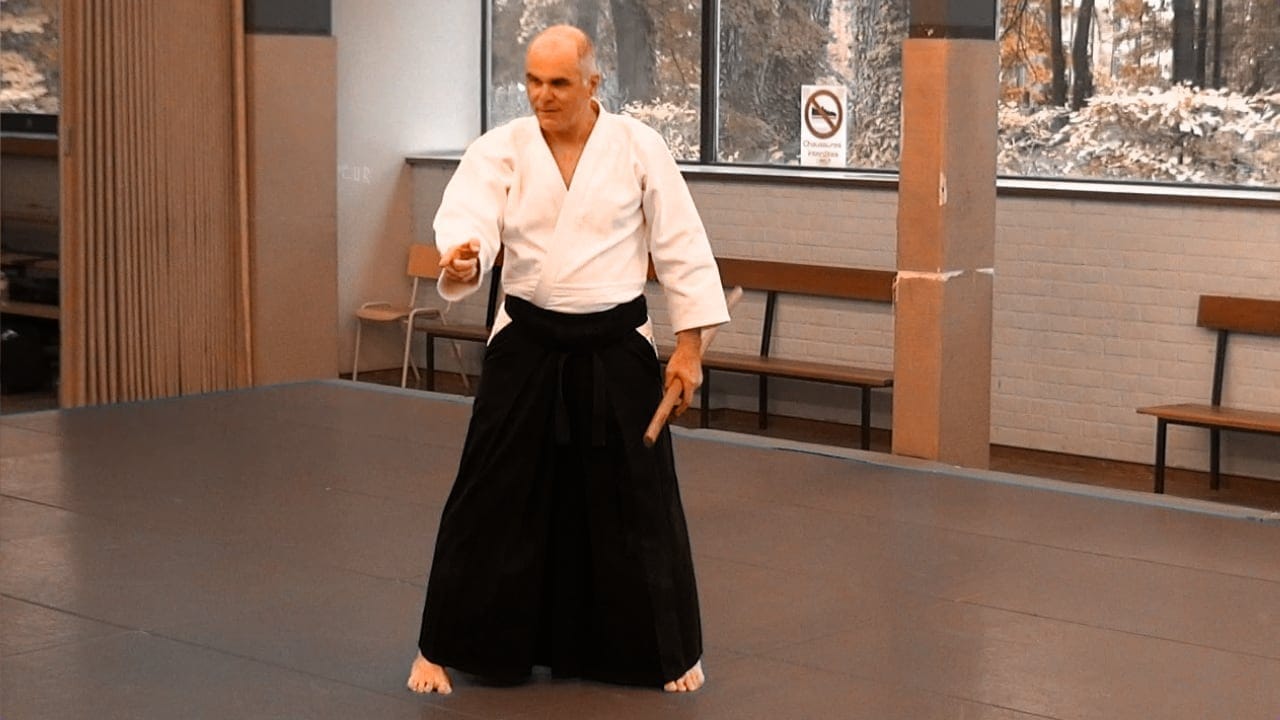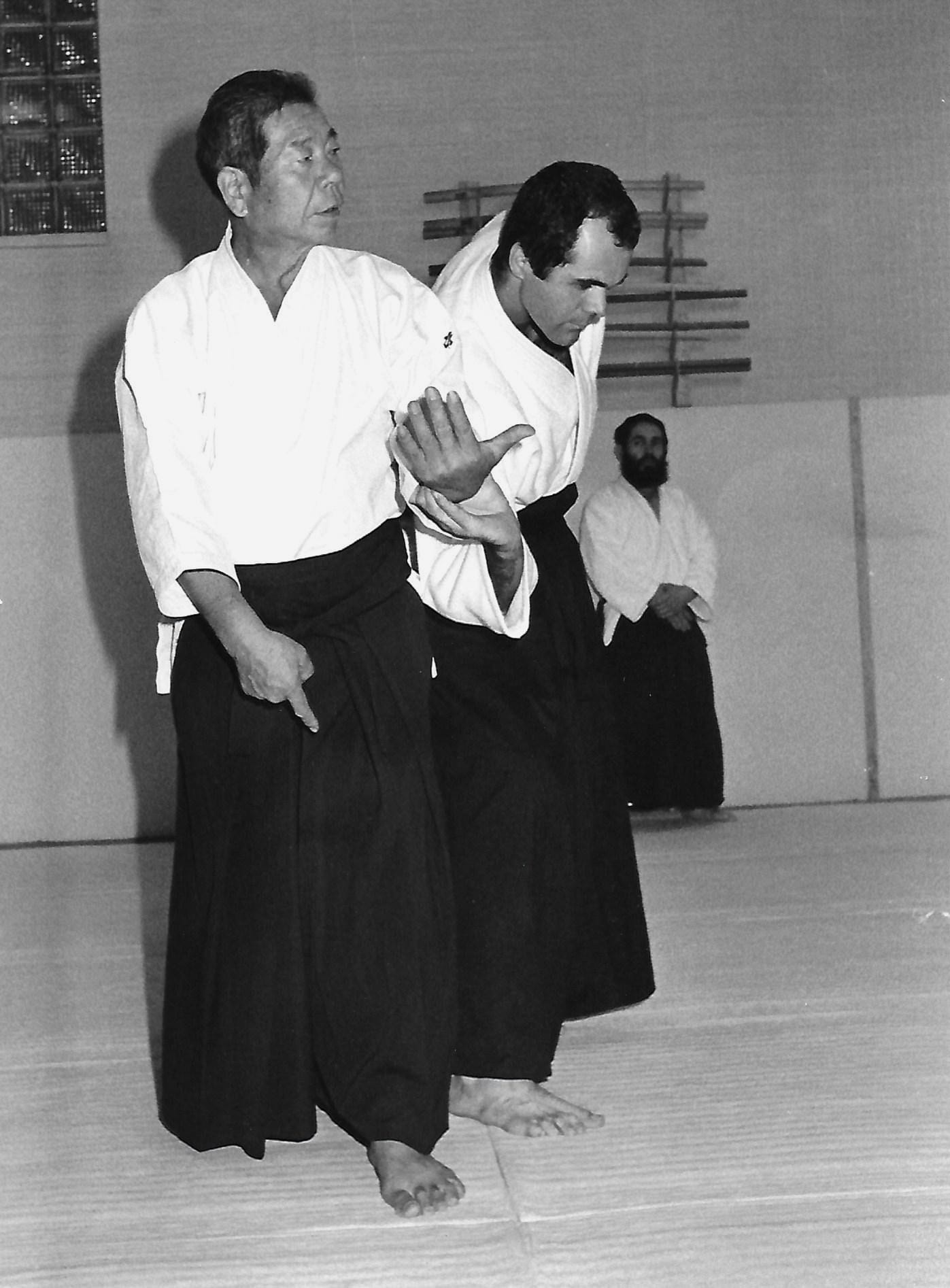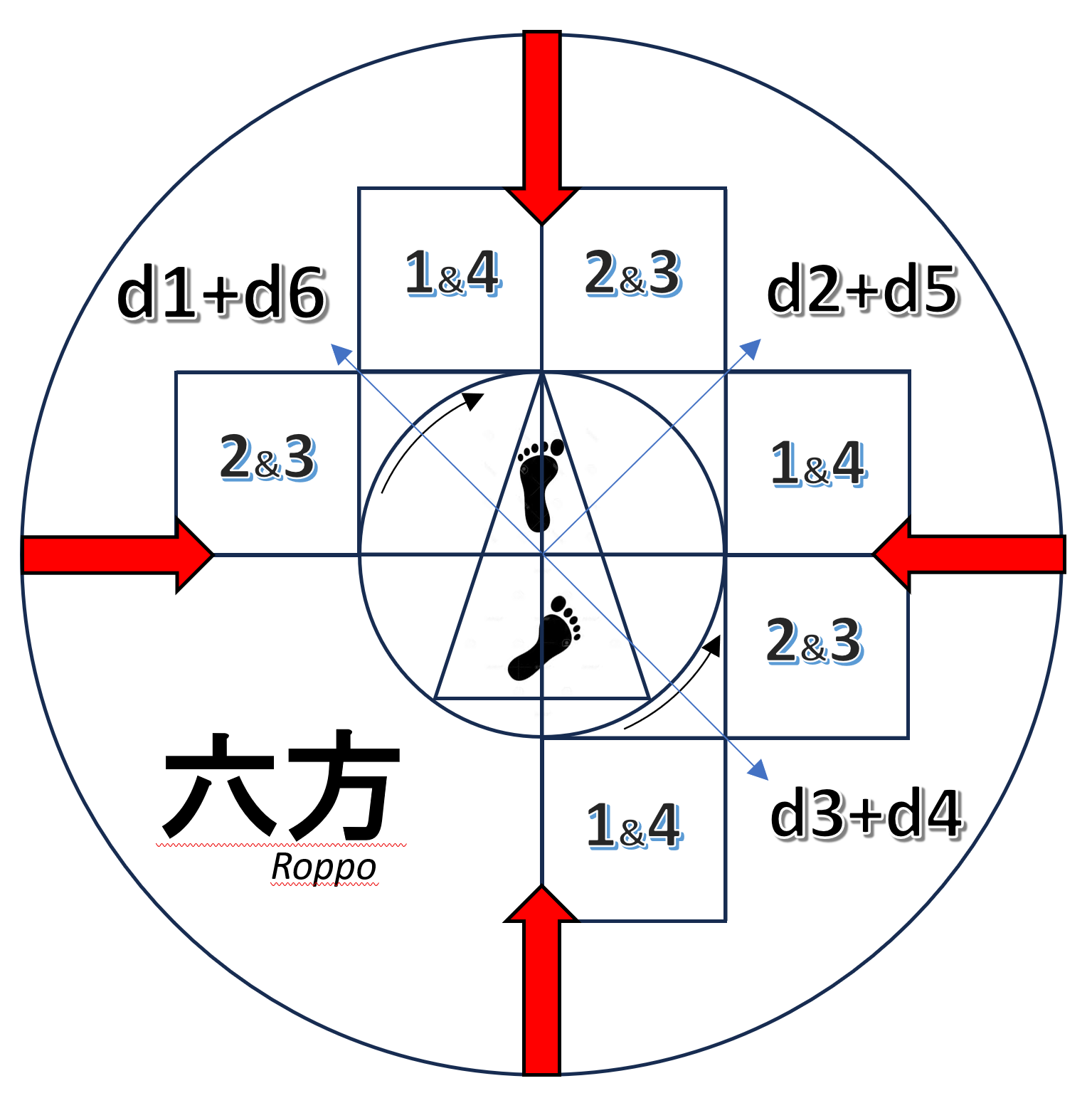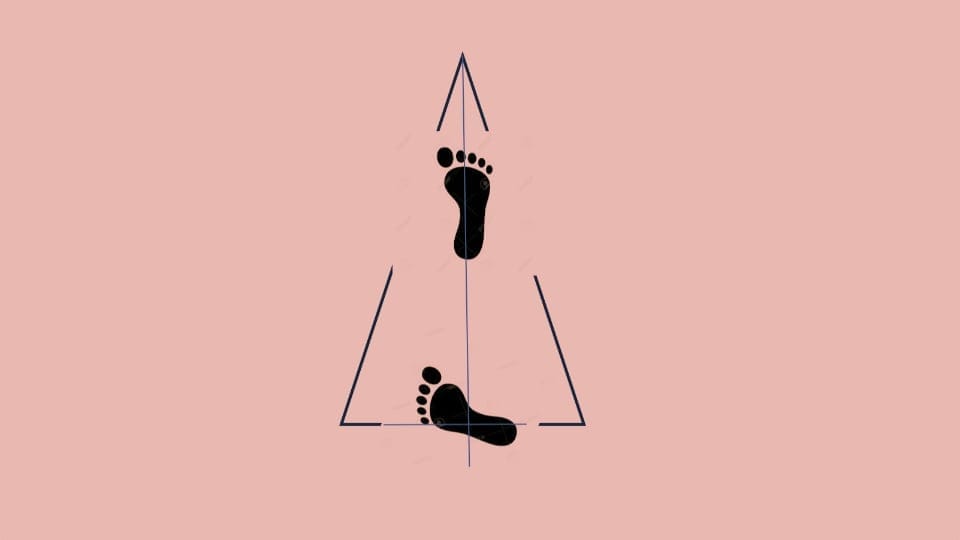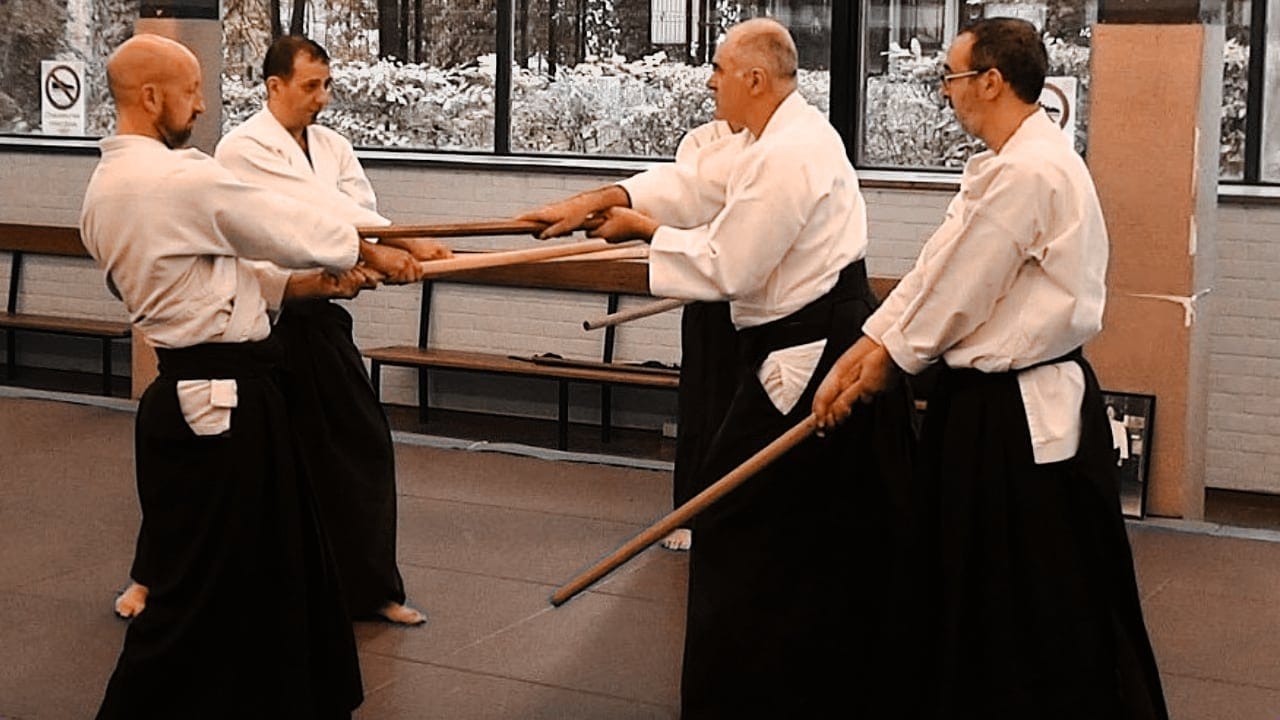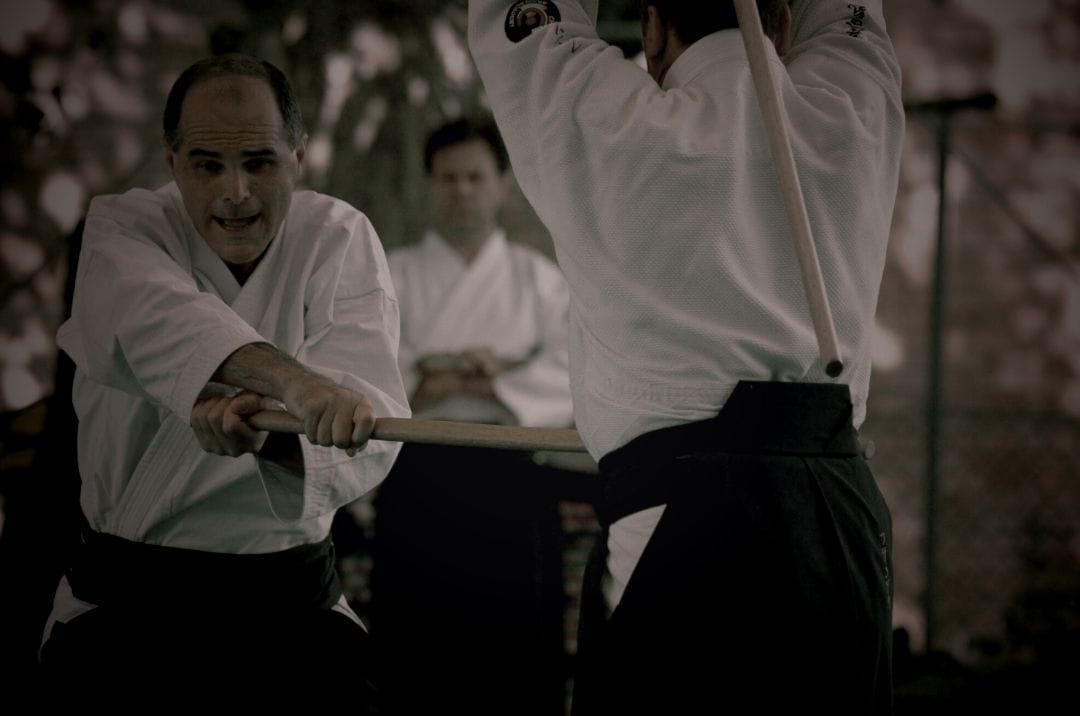Olla-podrida and pot-au-feu are culinary marvels, but certain mixtures sometimes turn out to be bad cuisine.
By forgetting O Sensei's teaching, we've mixed two things in Aikido that don't go together : position and movement.
Stance, it should be remembered, is a state of immobility. In a stance, man is stopped, he's posed like the vase on the living-room shelf, he doesn't move, he can remain like that for a long time, imperturbable.
In Aikido, there is only one position: hanmi, and there is nothing other than hanmi as a position. Hanmi is what immediately precedes and follows movement. Everything that exists before or after hanmi is not position but movement. O Sensei is unambiguous on this point in his book "Budo".
Of course, the human body needs support when executing a movement. When the first foot leaves the hanmi position to enable the strike (the front foot or the back foot), when it leaves the triangle, the new figure drawn on the ground by the two feet is a square - it can't be otherwise, since the second foot hasn't yet moved at this stage. But this new figure is not a position, it's a support taken from the heart of an action, a dynamic, and it is called kenka goshi. To confuse this transitory support with a position, that is with a pause, with a waiting time, is a total misunderstanding. Kenka goshi is not a position, it's an ephemeral moment of action, the support needed to complete the movement.
To equate support with position is incoherent. Because there's one fundamental thing that prevents supports from being positions : it is dynamics, the dynamics of action, which are such that nothing can or should ever stop them. From this point of view, movement and position are antinomic.
The video shows the square nature of the support at the moment of striking. This support is born of the breaking of the triangle in a new direction :
Be careful here, this moment of striking is not a moment when you stay, because there is a risk of harm through lapse of time. It's a passage, a brief moment, immediately followed by a return to the triangle by bringing back the back foot in its hanmi position.
Hanmi is the origin of Aikido movement because the triangular stance is the only one that opens the body to the six directions (roppo). In order to always start the movement from hanmi, it is obviously necessary to return to hanmi at the end of any movement. O Sensei explained this. And only then, once you've reached the new hanmi stance, are you back in position, ready for the next movement.
If the triangle is a figure of mobility, the square is, on the contrary, a figure of stability, of anchoring to the ground, of rooting, it's the very opposite of movement. To imagine that the square can be an Aikido position is to think that rootedness is conducive to movement. This is absurd : trees don't walk along roads.
But on the other hand, the consolidation and stability provided by the square are indispensable for power, which is why the strike must take place on the square support of the feet, just before the rear foot brings the body back into the triangular position.
Before, because it is important to remember that returning to the hanmi position mechanically withdraws the body away from the target, which is one of the functions of returning to the hanmi position. It is a fundamental error to place the strike in this time of effacement and withdrawal of the body, as the rear hip pulls the ken backwards, distancing it from the target it wants to reach. I feel obliged then to say this to the vast majority of Aikido practitioners who try to cut by conscientiously withdrawing the rear hip : you don't cut in hanmi. O Sensei didn't cut in hanmi, just look at his photos.
To sum up in a few words : hanmi is the unique origin of Aikido movement, and Aikido movement is an eternal return to the hanmi position, but between two hanmi positions there is no position, there is a dynamic built on the supports necessary for movement, and these supports must not be confused with positions.
Hodgepodge is the appropriate term for the modern intellectual mash-up that docently teaches several positions are used in Aikido. Such a belief shows a lack of understanding of the relationship between stance and movement in Aikido, and an ignorance of the exceptional possibilities and incomparable character of the hanmi stance when it comes to movement.
I'm not surprised that Aikikai, and sport budo in its wake, lack a clear vision of the unique and very specific relationship between the hanmi position and movement, since they've lost traditional knowledge. But I find it disturbing that Master Saito's son, Hito Hiro Saito himself, now teaches the movement figures hito e mi and kenka goshi as positions... which they are in no way.
I'm not trying to offend anyone here, looking at reality and saying so are not sins.

